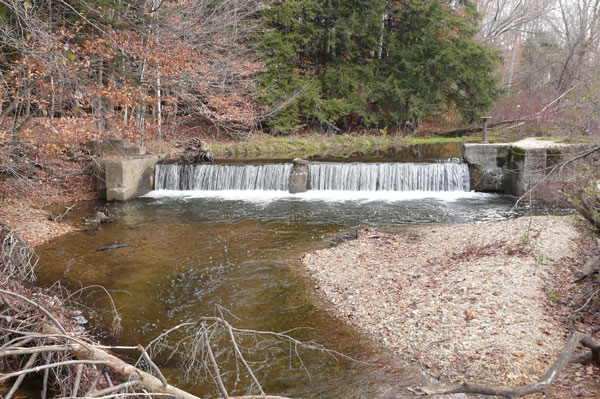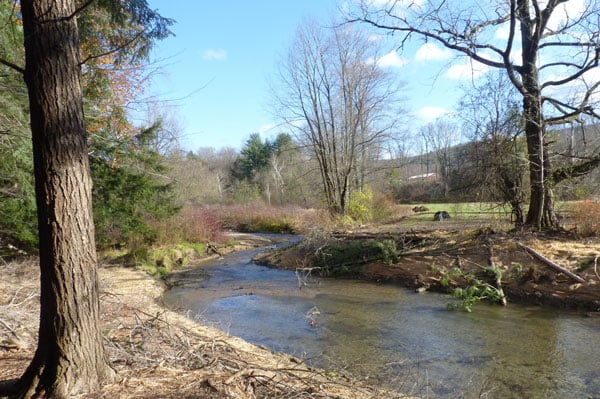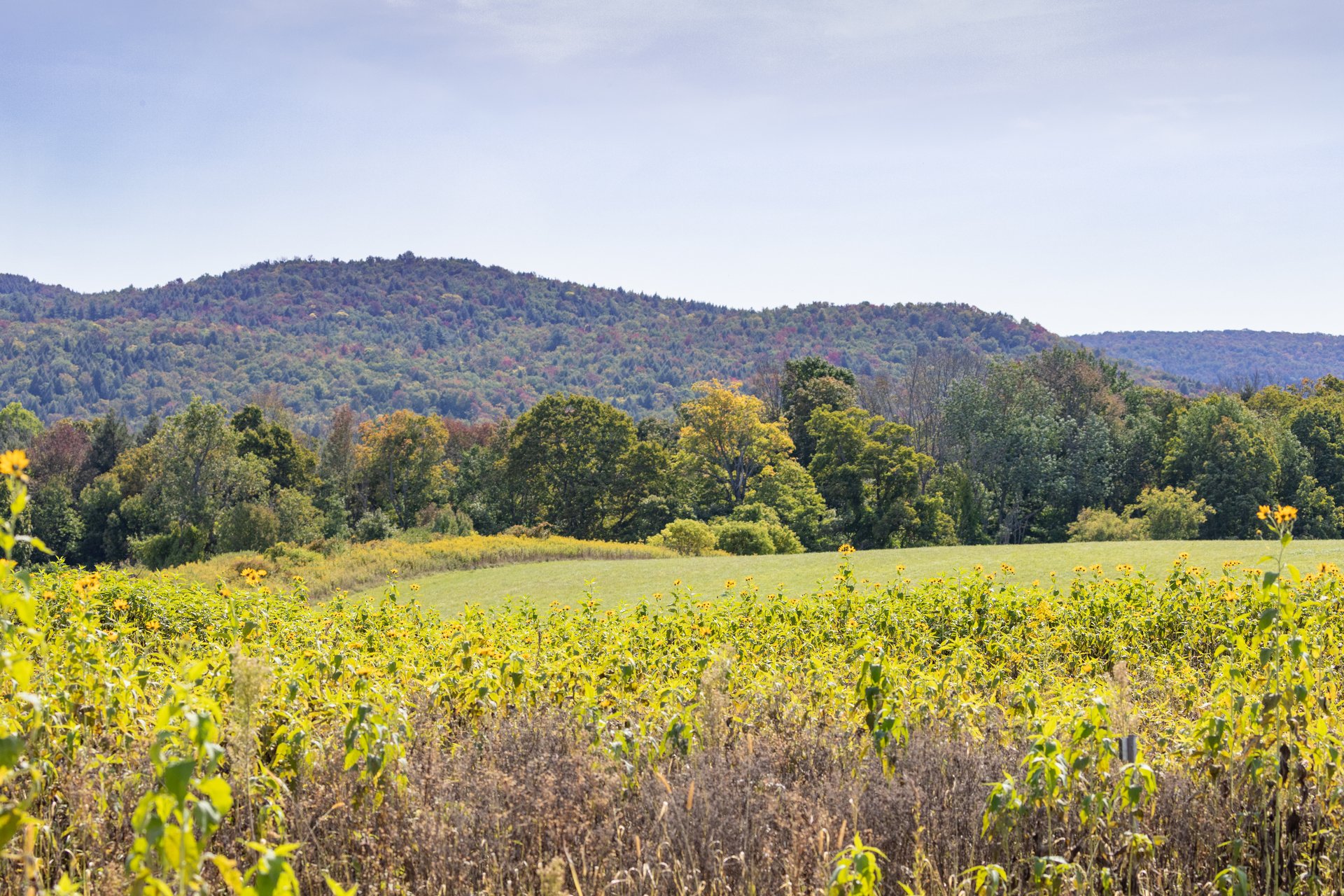Conservation Projects at Canoe Meadows
Sackett Brook Restoration Project at Canoe Meadows
Sackett Brook, with its headwaters in the October Mountain State Forest and Pittsfield Water Supply land, was once a high quality, sand and gravel-bottomed coldwater stream. But its natural flow was interrupted for 80 years by the concrete Gravesleigh Pond Dam and bridge.
Along with our partners, Mass Audubon worked throughout 2013 to restore the ecological integrity of Sackett Brook, an 8.5 mile-long tributary to the Housatonic River that includes an approximately 0.75-mile section that passes through Canoe Meadows Wildlife Sanctuary in the floodplain of the Housatonic River.
Now, over 105 miles of stream flow below the dam in Sackett Brook, including the Housatonic River and its tributaries between Woods Pond Dam in Lenox and the next dams upstream. Wildlife that call the brook and its floodplain home inhabit different areas of the stream as they complete the different phases of their life cycles—still pools and eddies, sheltering roots and rocks, and riffles contribute to zones of varying temperature, depth, water flow, and oxygen levels that form a mosaic of habitat conditions.
About the Dam
The dam at Sackett Brook was built in the 1930s to make a private reservoir for swimming and fishing. The altered streamflow eroded riverbanks in places, and caused sediment to build up in others, impairing the quality of the brook for plants and animals.
Fast-forward to recent years—the dam was obsolete and the bridge was in poor condition. Habitats had been disrupted for years. It was time to set Sackett Brook free.
 |
 |
| Gravesleigh Dam before removal | Gravesleigh Dam immediately after removal |
Restoring the Stream
Removing a dam—even a little one—is no small task. To complete the Sackett Brook Restoration Project, Mass Audubon worked with state and local partners, and funding was provided by the City of Pittsfield. Timing was important since the structure had to be removed before Wood Turtles, a state-listed rare species, settled into the brook to overwinter.
The project was planned for October 2013. In late September, the final federal permit was on the way. But then came a government shutdown. Mass Audubon and its partners waited nervously—the window of opportunity was rapidly closing. Fortunately, the Army Corps of Engineers came through in time to begin the project in earnest. Heavy construction was done by October 29, and a new streamside forest was planted in early November.
Watch a video of the removal process
Benefits for Wildlife—and Beyond
Thanks to these restoration efforts, the brook and forest now provide habitat for birds and other wildlife. It's hoped that the free-flowing water, shaded by new trees, will support a healthy population of Wood Turtles and enable the brook to stay cooler even as the climate changes.
The project also helps fisheries. Sackett Brook has several trout species, including native Brook Trout. With the dam gone, these species can now travel freely throughout the watershed. White sucker, slimy sculpin, and small fish like dace will also benefit from this new freedom.
It's a big win for students, too. Mass Audubon worked with nearby schools to use the project as a teaching tool. Elementary students explored the stream's ecology, and high school students recorded before-and-after footage. Armed with newfound knowledge, they will help encourage a healthy future for all our waterways.
Acknowledgements
The completion of this project in November 2013 was made possible by many partners. We are grateful to all of the following for their support, invaluable advice, and expert work in bringing this complex project to a very successful conclusion.
Mass Audubon, Massachusetts Department of Fish and Game’s Division of Ecological Restoration, Pittsfield Airport Commission, Massachusetts Department of Environmental Protection, George Noble, Jr. and Tweenbrook Farm, United States Army Corps of Engineers, Pittsfield Conservation Commission, University of Massachusetts, Massachusetts Historical Commission, Massachusetts SubCouncil of the Housatonic River Trustee Council, tribal authorities, and contractors Stantec, Incorporated, Kaszowski Brothers, and Public Archaeology Lab.
A special thanks to Crosby, Williams and Stearns Elementaries, Herberg Middle School, and Miss Hall’s, Taconic and Pittsfield High Schools for contributing student and faculty support.
This project has been funded through the Natural Resource Damage Assessment and Restoration Program (NRDAR Program) of the Massachusetts Department of Environmental Protection and the U.S. Fish and Wildlife Service, using funding via the Massachusetts SubCouncil of the Housatonic River Trustee Council as part of a legal settlement with General Electric Company for releasing polychlorinated biophenyls into the Housatonic River and its floodplain.
The contents of these pages do not necessarily reflect the views and policies of USFWS or of MassDEP, nor does the mention of trade names or commercial products constitute endorsement or recommendation for use.



